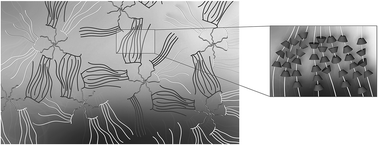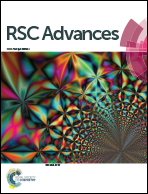A thixotropic polyglycerol sebacate-based supramolecular hydrogel showing UCST behavior
Abstract
Polyglycerol sebacate (PGS) is a relatively new biodegradable and elastomeric material that exhibits superior biocompatibility, a modulus that is comparable to human soft tissue, and linear biodegradation. However, the high hydrophobicity, low water uptake percentage and extreme synthesis conditions of PGS pose as a hindrance to its use in cellular biology, biomedical and other applications. We were able to modify PGS using atom transfer radical polymerization (ATRP) by synthesizing a PGS macroinitiator, allowing us to improve PGS's properties or introduce new properties to PGS. This macroinitiator would enable the building of a robust platform of PGS-based copolymers with monomers in the methacrylates, styrenes and methacrylamide families. We demonstrated the feasibility of this macroinitiator by using PEGMEMA as the monomer to synthesize PGS–PEGMEMA and created a PGS–PEGMEMA/αCD supramolecular hydrogel system. This hydrogel exhibited a tunable, low UCST of less than 90 °C, low minimum gelation concentration of 5.2%, rapid gelation and rapid self-healing ability with relatively high modulus (∼100 kPa) that is comparable to that of human soft tissue. This hydrogel system is injectable yet strong enough to provide support – features, making it a very suitable candidate as a vehicle for injectable sustained-release drug delivery, cell delivery, tissue engineering scaffold as well as for cosmetics and skincare applications.


 Please wait while we load your content...
Please wait while we load your content...